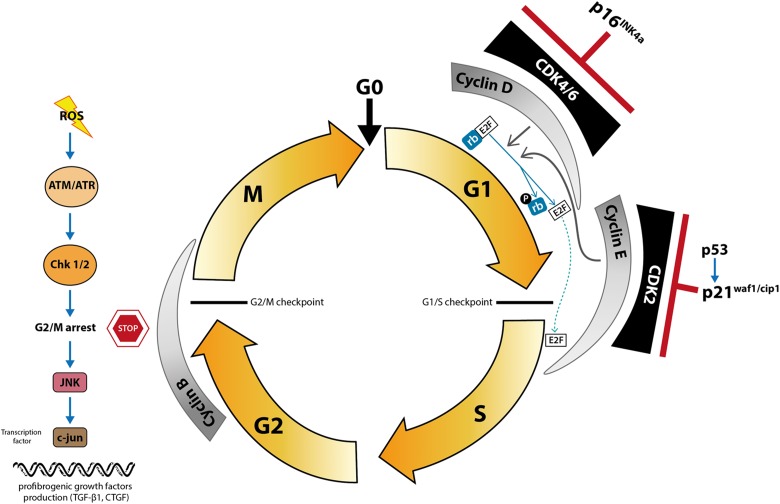Fig. 1.
Mechanism of cell cycle arrest induced fibrosis. In addition to the quiescent state (G0), the cell cycle includes 4 tightly controlled phases: G1, S (DNA synthesis), G2, and M (mitosis). Cyclin D and cyclin E are cell cycle regulatory proteins synthesized in the G1 phase (in its early and late portions, respectively) but degraded when the cells enter the S phase. Cyclin B is required for progression from G2 to M, and an increased cyclin B/cyclin D ratio might represent accumulation of cells in G2/M, which can occur in maladaptative repair. The p16INK4a and p21Waf1/Cip1 proteins bind to cyclin-dependent kinase–cyclin heterodimers, causing cell cycle arrest in the G0 to G1 phase, inhibiting cell proliferation. Hypoxia and reactive oxygen species may activate protein kinases Chk1 and Chk2 through ataxia telangiectasia mutated/ataxia telangiectasia and Rad3-related protein kinase signaling pathway, promoting cell cycle arrest in G2/M checkpoint. An excess of G2/M-arrested cells activates the Jun N-terminal kinase pathway, increasing levels of the transcription factor c-jun, which upregulates profibrotic cytokine production.

